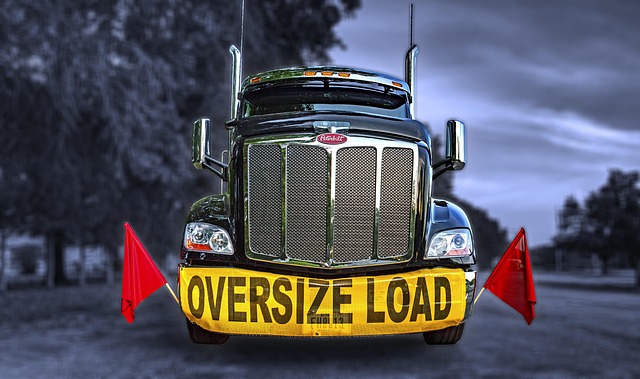Learn how to register your car in California with our step-by-step guide. Navigating the process is easier than you think! First, understand the registration requirements and gather essential documents, including proof of ownership and insurance. Then, undergo a crucial VIN verification using a trusted vin verifier to ensure vehicle authenticity. Submit your application at a DMV office or online. After successful registration, complete post-registration tasks like setting up license plates and updating your vehicle’s records with the California DMV.
- Understanding the Registration Process
- Gather Required Documents
- VIN Verification: A Crucial Step
- Submitting Your Application
- Post-Registration Tasks and Considerations
Understanding the Registration Process

Registering a car in California involves several steps, and understanding the process beforehand can save time and effort. The initial step is to ensure your vehicle meets all state requirements and standards. This includes a thorough vin inspection to verify the Vehicle Identification Number (VIN) and check for any potential issues or thefts. In California, this process often begins with obtaining a registration fee estimate from the Department of Motor Vehicles (DMV).
Once your vehicle passes the vin verification, you’ll need to gather essential documents like proof of ownership, insurance, and identification. You can typically do this at a local DMV office or, for added convenience, opt for a mobile vin inspection service that allows you to register your car from the comfort of your home or workplace. This modern approach streamlines the traditional process, making car registration more accessible and efficient.
Gather Required Documents

Before you start the registration process, make sure you have all the necessary documents ready. The California Department of Motor Vehicles (DMV) requires a variety of information to ensure a smooth and accurate transaction. One crucial document is the Vehicle Identification Number (VIN) verifier, which can be obtained through a mobile vin verification or inspection service. This unique code is essential as it allows the DMV to cross-reference your vehicle’s details with their records.
Additionally, you’ll need proof of ownership, typically in the form of a title or bill of sale, and valid identification such as a driver’s license or passport. It’s also beneficial to have insurance documents handy, as registering a car often involves proof of financial responsibility. With these essential documents gathered, you’re well-prepared to take on the registration process and get your vehicle roadworthy in no time.
VIN Verification: A Crucial Step

When preparing to register your car in California, one of the most crucial steps is undergoing a Vehicle Identification Number (VIN) verification process. This step is vital as it ensures that your vehicle meets all the necessary safety and emission standards set by the state. A reliable vin verifier, whether it’s a mobile vin inspection or a stationary one, plays a critical role in this procedure.
A mobile vin verifier can be particularly convenient for California residents, offering on-site inspections that save time and effort. These services check the VIN against national and state databases to verify the vehicle’s history, including any reported accidents, outstanding loans, or recall issues. This information is essential for both buyers and sellers to make informed decisions, ensuring a smooth registration process for your new or used car.
Submitting Your Application

After completing your vehicle registration form, it’s time to submit your application. You’ll need to ensure all required documents are included for processing. One crucial step is to verify your Vehicle Identification Number (VIN) using a reliable method like a mobile VIN verifier or mobile VIN inspection service. This process helps in cross-referencing the vehicle’s information with manufacturer records, ensuring accuracy and preventing fraud.
When submitting your application, make sure to double-check for any errors or missing details. California’s Department of Motor Vehicles (DMV) provides guidelines on their website to help you understand what’s required. Using a mobile VIN verifier can assist in this step by offering a quick and convenient way to confirm your vehicle’s authenticity, making the registration process smoother.
Post-Registration Tasks and Considerations

After successfully registering your vehicle in California, there are several crucial post-registration tasks to complete to ensure a smooth ownership experience. One essential step is obtaining a Vehicle Identification Number (VIN) verifier from the DMV or utilizing a reliable mobile VIN verifier service. This process involves verifying the authenticity of your car’s VIN, which is a unique identifier that provides vital information about the vehicle’s history and specifications. A mobile VIN verification service can offer this inspection conveniently at your location, making it an attractive option for busy individuals.
Additionally, ensure you have all necessary insurance documents and that your vehicle’s registration stickers are correctly displayed. Keeping up with these considerations will help avoid any future legal issues or penalties. It’s also beneficial to familiarize yourself with California’s vehicle maintenance and safety standards, including regular emissions tests, to maintain your car’s compliance and potentially save on registration fees.
Registering a car in California involves several key steps, from gathering essential documents to completing a VIN verification. By understanding each phase of the process, you can ensure a smooth transition into California’s vehicle registration system. Remember, accurate and timely documentation is crucial, making a reliable vin verifier an indispensable tool. Once your application is submitted, stay informed about post-registration tasks to maintain compliance with state regulations.
